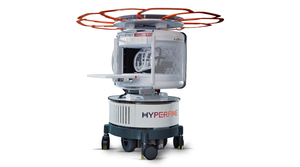Originally Published MDDI October 2002NEWS & ANALYSISSupply-Chain Emergency Response DevelopedMaureen Kingsley
October 1, 2002
Originally Published MDDI October 2002
NEWS & ANALYSIS
Maureen Kingsley
An organizational chart and timeline explaining the recently devised medical supply chain response to catastrophic emergencies are now available for public review.
The procedures specified in the documents were drawn up by a joint task force of medical supply-chain participants, including representatives from the Health Industry Distributors Association (HIDA), the Association for Healthcare Resource & Materials Management (AHRMM), AdvaMed, the American Hospital Association, and others. The federal Office of Emergency Preparedness assembled the task force shortly after the events of September 11, 2001.
According to HIDA, the task force successfully persuaded federal agencies to adopt the supply-chain approach—as an alternative to facility-level stockpiling—to provide supplies to hospitals during large-scale emergencies. To support its position, the task force cited an HHS data sheet titled "17 Critical Benchmarks for Bioterrorism Preparedness," which does not specify facility-level medical-supply stockpiling as necessary for ensuring preparedness.
The supply-chain response system was developed to address catastrophic events whose scope extends beyond that of relatively minor, routine disasters. Catastrophic emergencies "typically transcend individual hospitals and become community events," says Al Cook, president of AHRMM and chief resource officer at St. Francis Medical Center in Louisiana.
A critical element of the response system is the CBRNE designation. The acronym stands for chemical, biological, radiation, nuclear, and explosives— the five ways to define catastrophes and categorize supplies. The CBRNE template, which will become available to hospitals to prepare for large-scale emergencies, will "allow a hospital to maintain an open order at its distributor location that would detail the number and type of items to ship in any CBRNE event," Cook says. The order could be instantly activated by making a phone call at the onset of the catastrophe, thereby avoiding some of the lost time associated with waiting for the disaster to happen before determining what products need to be ordered.
For example, Cook explains, in the event of a chemical attack, a hospital could immediately phone its distributor and say, "Activate my C list for 500 people." The distributor would understand the order and be able to fill it right away.
Cook says the problems associated with facility-level stockpiling are many. "Stockpiling can lead to obsolescence [of inventory] due to deterioration." He adds, "It would be difficult for the supply chain to support 6000-plus hospitals stockpiling similar items at the same time." Such a system, he explains, would "stress the supply chain past the point of becoming able to support the demand."
Medical-supply vendors are better able to manage stock—i.e., the bulge in the supply pipeline—than are individual hospitals, Cook says. Distributors generally use sophisticated, computer-assisted stock-rotation techniques, whereas hospitals lack such systems and tend to rely on entry-level technicians to accomplish the stock-rotation task.
The task force hopes to standardize the CBRNE template and its related procedures with the cooperation of government agencies. If the group is successful, the medical supply chain response will likely replace facility-level stockpiling as a means for responding to large-scale catastrophes.
Copyright ©2002 Medical Device & Diagnostic Industry
You May Also Like


